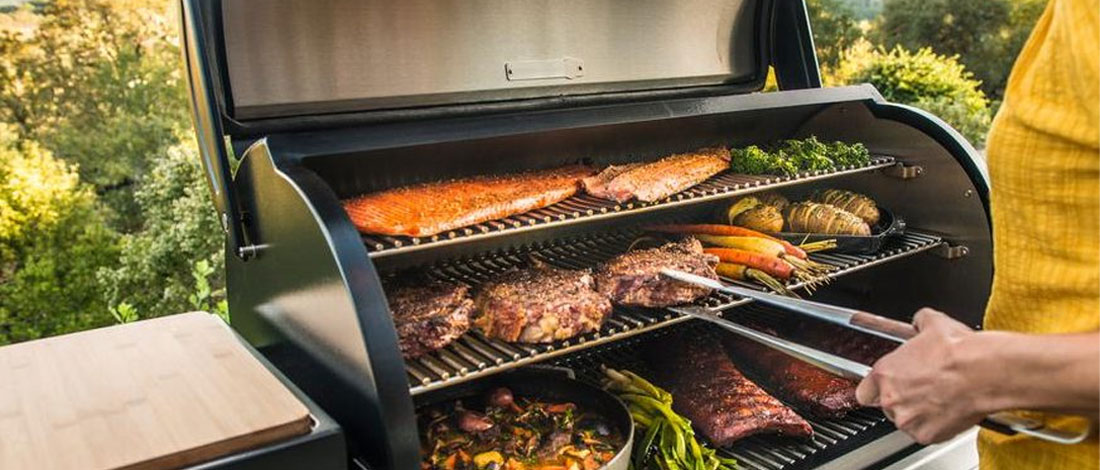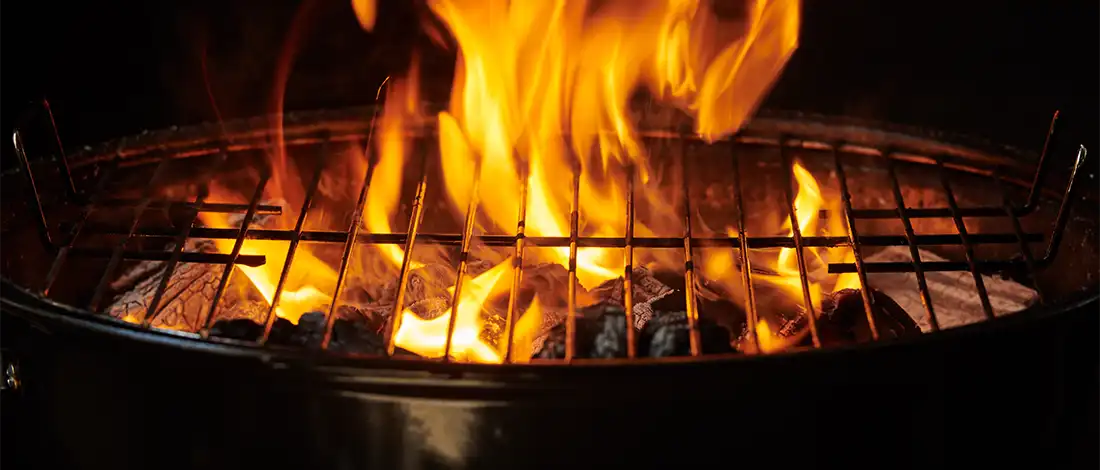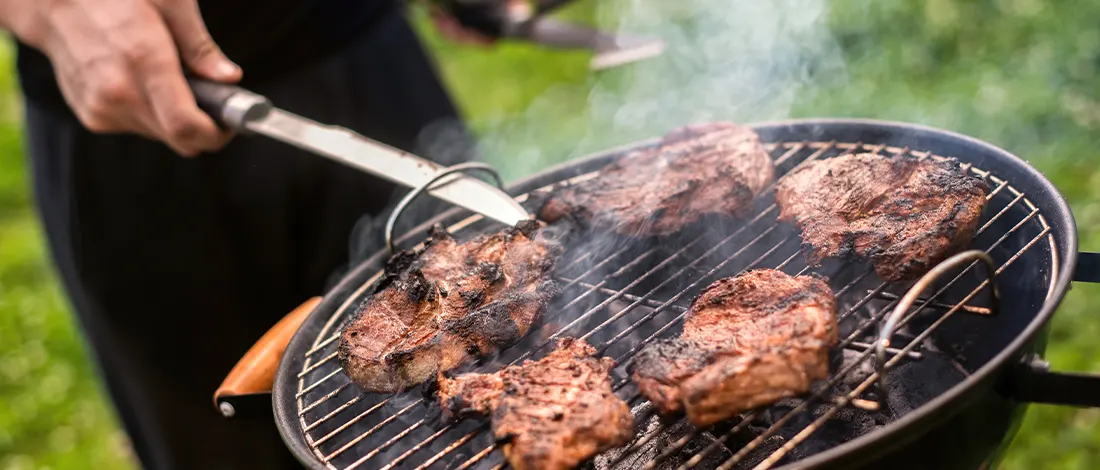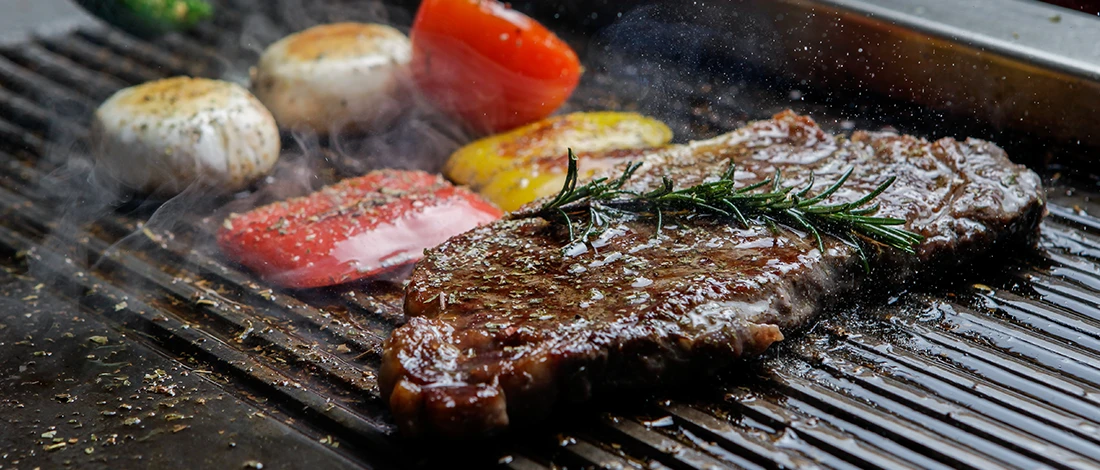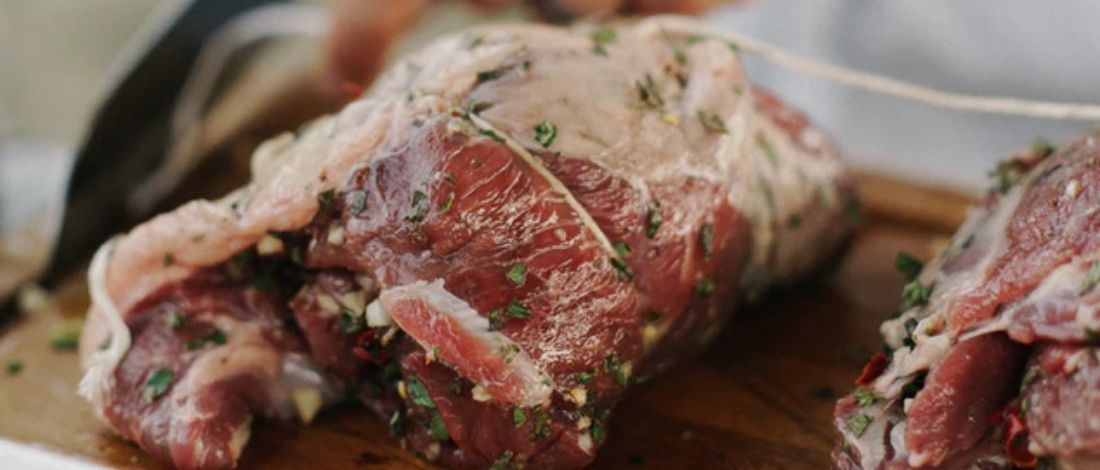Inviting your friends and loved ones over for a Saturday afternoon barbecue will invariably bring out the Masterchef in every alpha male present.
At Carnivore Style, we know that the real highlight of any grill session is the meat, but adding perfectly grilled vegetables can make the meal even better.
Yet haul out your basket of vegetables, and chances are everyone will scurry off into the corners to hide from the prospect of having to deal with such an unknown entity.
Grilling vegetables on a fire or gas grill is an excellent way to add some healthy and tasty side dishes to your Sunday barbecue. Here are some tips on how to get the job done right, every time.
Quick Summary
- Grilling vegetables involves cleaning, cutting, seasoning, and cooking them on a grill.
- The process can vary based on the type of vegetable, with some requiring blanching before grilling.
- Grilled vegetables can provide a healthy, flavorful addition to any meal.
Grilling Vegetables – The Basics
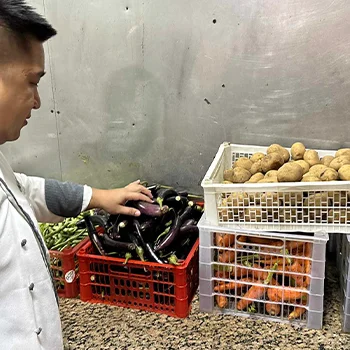
Grilling vegetables is not exactly fine art, but it requires scrutiny and attention. Leaving your veggies on for too long over a high-intensity heat or open flame is a sure way to burn them, rendering them all but ready for binning.
If you are grilling over a charcoal fire, which is best for an intense smokiness, you can manage and supervise the grilling process by piling up the coals to one side and moving them back and forth from your grilling area.
This way, you have control over the temperature of your grill. Use lump coal and start the process in a chimney starter to get evenly hot coals.
Furthermore, you need to keep these in mind when grilling your vegetables:
- Start by soaking and rinsing all your vegetables to remove soil or residual dirt.
- Root vegetables, in particular, will need a good scrubbing to remove the soil they are grown in. Remove any seeds present, then cut broad, dense veggies such as zucchini, onions, bell peppers, and mushrooms into even slices.
- Oil your veggies in virgin olive oil and sprinkle with salt and pepper.
- According to taste, you can also marinate them in your favorite spice and herb mix. Pop the veggies onto your grill, and transform them using your preferred grilling method.
- You can also shift your vegetables around to manipulate and control the grilling process.
- Some vegetables take longer than others and may require a longer grilling time or a hotter fire temperature.
- The fire should be hot, around 430°F to 600°F, depending on the type, size, and thickness of your veggies, and they should be done within 3 to 5 minutes per side (you may need to use your intuition on this one).
- If you’re going for a less messy, hassle-free gas grill instead, preheat the grill to a medium-high 370°F to 400°F.
- Place your pre-seasoned, oiled vegetables on the grill and remember to grill with a closed lid.
Direct Grilling Vegetables: Preparation and Method
Parboiled Vegetables

Parboiled vegetables such as artichokes and beets must be boiled in salted water until the fibers break down and soften.
Parboiled vegetables such as artichokes and beets must be boiled in salted water until the fibers break down and soften.
Pat dry and chuck them onto the hottest part of the grill to evaporate the steam quickly and crisp them up. Watch these closely to avoid burning.
Large Vegetables
Larger vegetables such as zucchini, bell peppers, eggplant, onions, or mushrooms will need to be sliced.
You want the vegetables with different properties to cook as evenly as possible.
So, brush them with oil, then season them with salt and pepper or your preferred spice mix and pop them directly onto the grill.
Small Vegetables
Smaller vegetables can be skewered to create veggie kebabs, especially those with similar cooking times.
Skewers help keep them from falling apart and allow you to rotate them more quickly without having to attend to them individually.
Thinner stalky vegetables such as asparagus or snap peas can be pinned together at the top and bottom with toothpicks to hold them together.
Watch these in particular for burning. Place the veggies on the cooler side of the grill.
Check your veggies after 5 minutes without peeking and flip them over if they look ready on one side.
They should be ready after another few minutes. Remove your veggies carefully from the grill one by one, starting with the ones closest to you or in the same order that they were flipped over.
Suitable Vegetables For Direct Grilling

All vegetables contain water, some more than others. Direct high heat is suitable when you want to expel the bulk of it in a short period to promote caramelizing of the sugars in the veggie without burning or overcooking. How else do you get the charred, smoky effect?
Vegetables suitable for direct grilling include:
- Moist and soft veggies: - zucchini, mushrooms, bell peppers, tomatoes, corn, and leeks.
- Leafy greens: - kale, Swiss chard, bok choy
- Stalky slender veggies: - broccolini, asparagus, green beans, snap peas
- Sliced veggies: - eggplant, onions, sweet potato, fennel
- Parboiled veggies: - artichokes, beetroot [1]
Related Article: How to Use a Grill
Indirect Grilling Vegetables: Preparation and Method
Indirect grilling means that the vegetables are cooked next to, rather than directly over the fire or coals.
According to Allison Schaaf, MS, RDN and founder of meal planning website PrepDish, the first step for indirect grilling is to cut vegetables a little on the small side.
Indirect heat means a low heat and longer cook time. Smaller size vegetables will cook more quickly.
The coals are raked to the sides or around a large foil drip pan. The vegetables are then placed in the center of the grill directly over the drip pan.
Using the gas grill method, depending on the model, light the outside or rear and front gas burners only and place your vegetables in the center of the grill where there are no direct flames.
Indirect grilling is suitable for larger, denser vegetables requiring a longer cooking time. Other methods using indirect grilling include using a foil pack or grill basket.
This method is also great where smaller or more delicate vegetables are being grilled and minimizes the risk of burning or losing them to the fire if they fall through the grill mesh [2].
Suitable Vegetables For Indirect Grilling

Most vegetables are suitable for both direct and indirect grilling.
The secret is in the technique rather than the grilling method. In military jargon, this would be expressed as a tactic over strategy.
Certain veggies that tend to burn more quickly are better suited to indirect grilling, which is slower and allows for more control over the entire process.
Vegetables suited to indirect grilling include:
- Winter squashes: - butternut, gem squash, acorn, pumpkin
- Tubers: - potatoes, yams, sweet potatoes
- Root Vegetables: - parsnips, carrots, sunchokes
- Firm Brassicas: - cabbage, Brussel sprouts, kohlrabi, cauliflower
Additional techniques can give your veggies that extra edge in taste.
Try smoking them more intensely by adding water-soaked hardwood chips or chunks to your charcoal to slow down the process and create the smoke.
You can also lay your unpeeled eggplant directly on the raked coals to create that charred taste and texture of a delicious Baba Ghanoush.
At Carnivore Style, we focus on making your meals delicious and balanced, even when meat takes center stage. Check out our other guides for more grilling tips and carnivore-friendly recipes.
References:
- https://www.ambitiouskitchen.com/how-to-grill-vegetables/
- https://www.nytimes.com/2021/06/15/dining/grilled-vegetables-how-to.html


